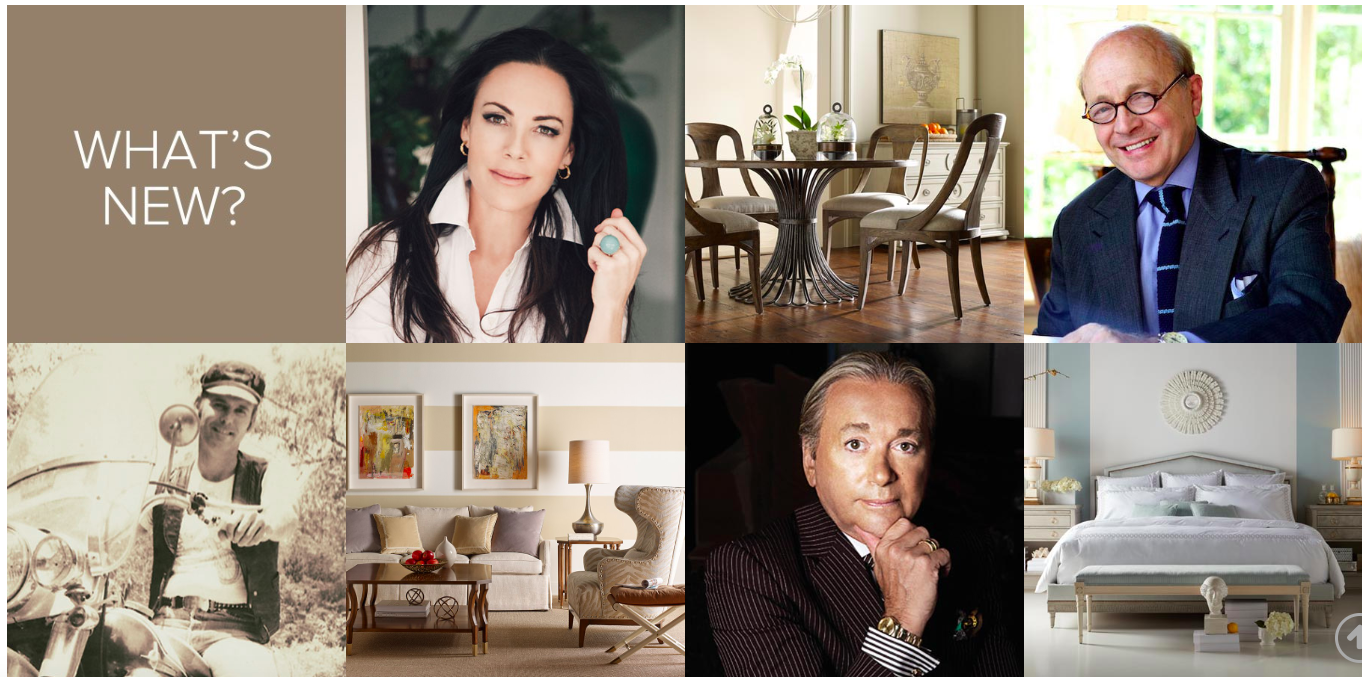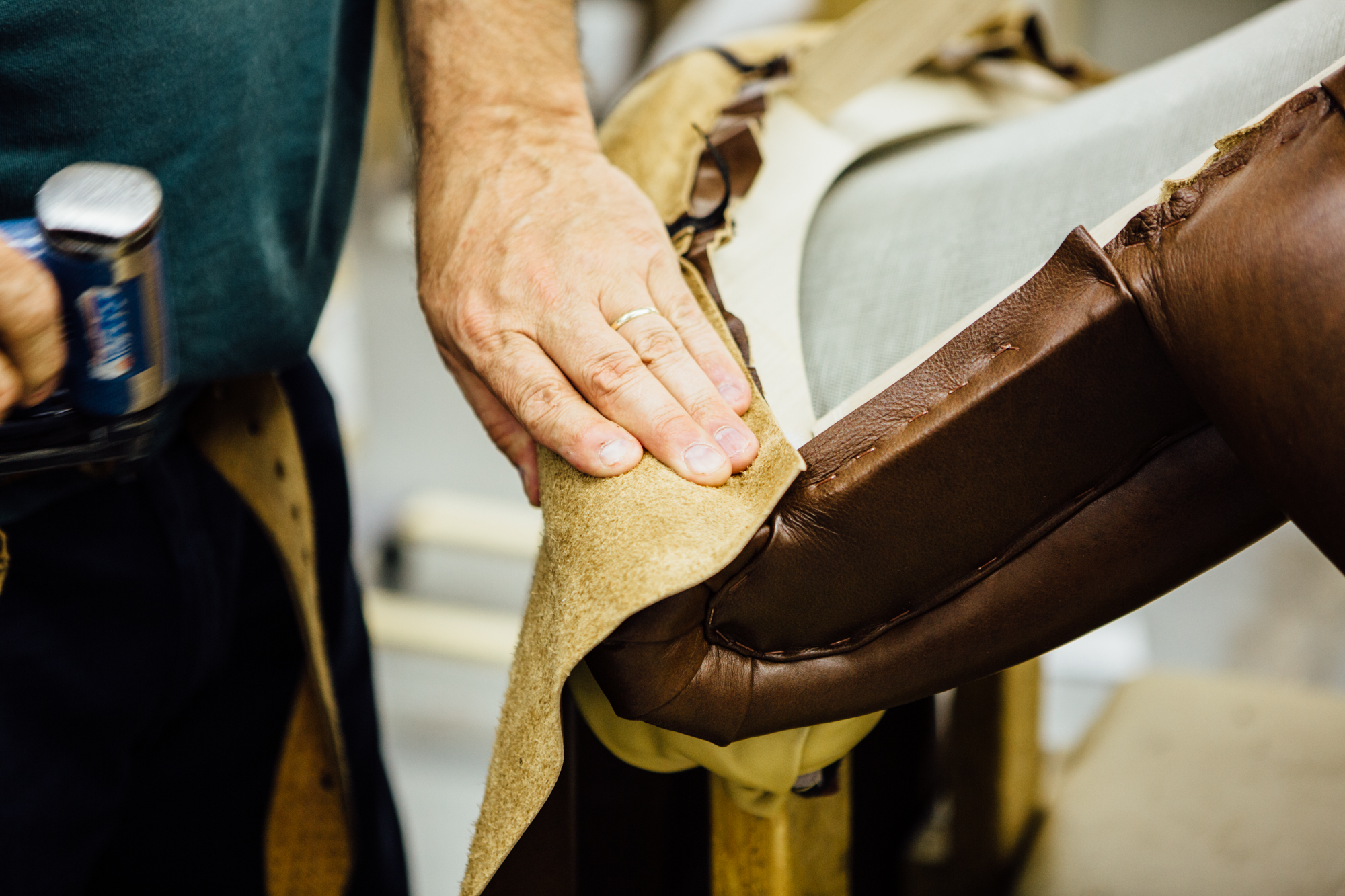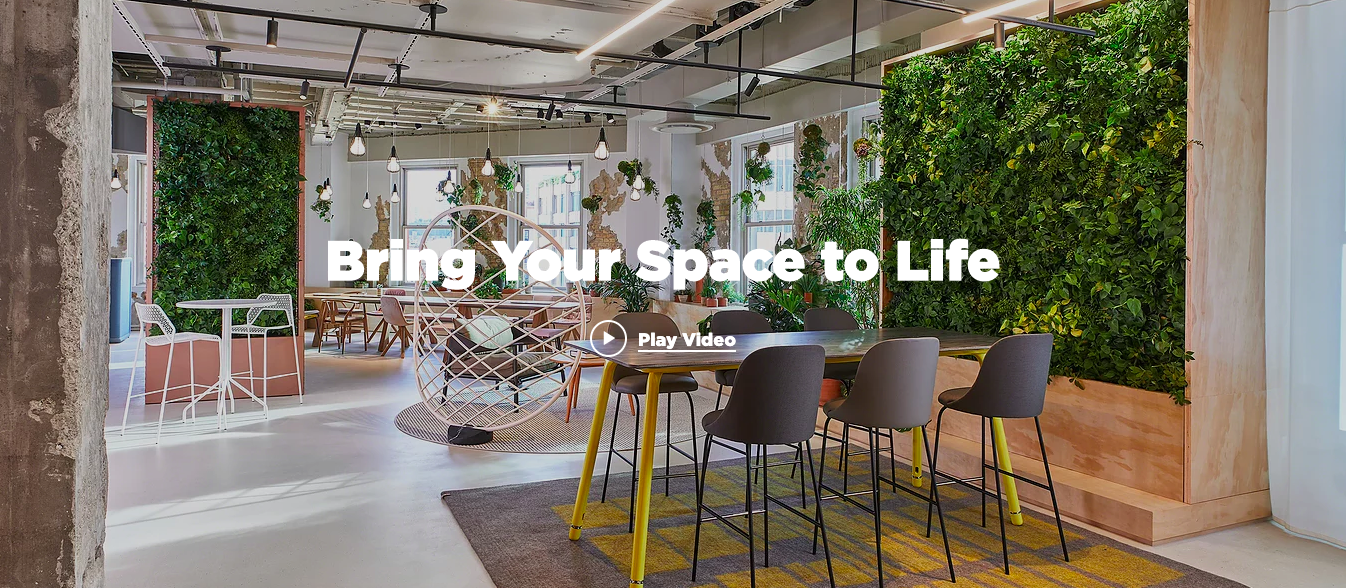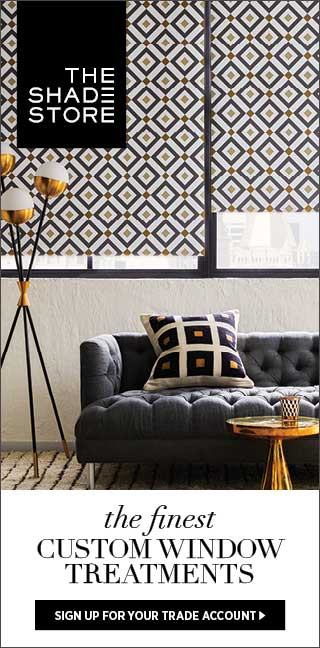
Welcome to Spring!
Spring is here it's time to throw open the windows and let the sun shine through. We hope you're anticipating a busy and productive season and hope you will call on us for any assistance we might be able to provide as you continue to increase your education and build your business.
For those of you who attended High Point Market, we hope that you had a successful visit. We know how that experience can get a designer really pumped up about their business and their passion for design! Let us know if you have interest in attending in October and have interest in connecting with a DSA group.
Remember, we love to share positive, productive and inspirational stories from our members! If you have a story to share, please email us at
support@dsasociety.org.
All the best!
Natasha Lima-Younts DSA
Founder/President
Designer Society of America

Chaddock Raising the Bar
Focus on Designers
With a deep-rooted, rich heritage in the furniture industry, the company was originally Guy Chaddock, founded in the 1950s in Bakersfield, California. “It was truly a custom shop where we made these country English reproductions and had a team of incredibly talented artisans,” says Chaddock CEO Andrew Crone. The company changed ownership in early 2000 and currently manufactures 90 percent of its product in Morgantown, North Carolina.
Last year the company underwent a rebrand, searching for something that better reflected who they are and what differentiates them from others in the industry. “We aren't here just to make furniture – there's plenty of furniture manufacturers in North Carolina, and they do a great job,” says Crone, adding that where the company stands out lies in the extent to which they meet the needs of their clients.
“Designers have come to us for years not only for our quality but because of what we call the ‘workroom mentality,' We collaborate with designers to customize our product to fit their needs more than any other manufacturer,” he says, noting that the term “custom” is used loosely in the industry, even for simply changing the fabric or the finish.
Chaddock has a full range of custom options, allowing designers to customize any aspect of a piece, from changing depth and width of a sofa or changing out the style of the back or arms. About 25 percent of their business is true custom, enlisting changes of not just fabric or finish but actual dimensions of a pieces, says Crone, noting they receive 35-60 custom quotes a month from designers.
Another large percentage of their business comes through a program they've developed called “easy scale” or configurable, in which they identify commonalities in those custom quotes and create programs such as “top down” for dining tables, which allows designers to choose from 10 base options, numerous top dimensions, various etch styles, plank or smooth top, and over 60 finishes. “So, it's still custom but it's pre-engineered so you're not having to wait extra lead time,” he says.
Chaddock recently raised the bar once again by streamlining their processes in order to reduce lead times and establish on-time deliveries. Their quick ship program guarantees a three-week delivery on over 90 stock keeping units (SKUs), including a lot of upholstery, encompassing some 250 fabrics or customer's own material (COM) for a designer, with an average delivery time of 17 days. “We back that up with a guarantee that we'll pay the freight if we don't hit that three weeks,” says Crone.
Any other upholstery order delivers in just four weeks, and case goods are 4-6 weeks. A true custom piece that requires changing dimensions will take 8-10 weeks, he says, noting that most in the industry have lead times of 8-10 weeks on standard upholstery pieces and at least that long for case goods as well.
Knowing that many designers want to select their own freight companies, Chaddock operates freight direct. “We will do the best way and select one if they don't have a preference, but freight direct offers them the ability to use any of the freight companies and work with a local receiver, which we highly recommend,” he says, noting that they have trade showroom partners in major cities that designers can work with for receiving.
Chaddock's new co-branding collaboration allows designers to add their logo to a custom piece's tag. “Putting the designers first is not something that's normal in the industry. We realized that when a designer customizes our product, they're really putting their stamp on that piece,” says Crone, noting it's just one way Chaddock gives back to designers for the partnership and using them as a true workroom with workroom mentality.
The company recently invested in a brand new showroom at High Point, as part of their effort to build customer experience. The space was completely renovated from the ground up to meet Chaddock's needs. “It was designed to allow us to show our product in a variety of ways so customers can see all the depth to the line that we offer,” says Crone, who says the showroom opened at last fall's market. “We aren't here just to make furniture but to also promote the design community, we want to celebrate the custom craftsmanship we're able to offer to designers.”
Crone say new designers interested in working with Chaddock can email
info@chaddockhome.com to be put in touch with a marketing and sales representative who can tell them more about the brand, how the company operates and the available tools they offer.
https://chaddockhome.com/
Karen K. (KK) Snyder
What is “Biophilic Design?”
Bring on the Green
As more emphasis is placed on sustainability in the interior design industry, more clients are requesting the use of natural elements. Many of you might already be incorporating nature in your design projects but not be acquainted with the term “biophilic design.”
The use of biophilic design ranges from installing a “green wall” or wall of living plants to designing the room so that a window allows occupants to observe a green space or garden outside. Using practices such as biophilic design are shown to enhance the well-being and overall health of individuals, especially those who live and work in urban environments.
Biophilia is not a new concept. In fact, it was first created by the esteemed Harvard biologist E.O. Wilson while he was pondering the connection between contemporary human behavior and how we adapt for survival. He recognized the natural tendency for humans to have an emotional affiliation with other living organisms. Others have since established that humans have an innate biological connection with nature.
Many in the design industry believe that biophilic design is not a passing trend or fad but rather an element of design that many clients have come to expect in a project. And residential design isn't the only area of request for this feature. Office, hospitality, retail and health care facilities are also enlisting this design element in projects.
For designers looking to fulfill such requests from their clients, there are many options for purchasing quality natural elements―single plants to entire planted structures―from companies such as sagegreenlife. The company's founder, Richard Kincaid, says LED plant lights allow plants to grow and remain healthy even without access to direct sunlight.
Sagegreenlife builds living, green plant walls on a patented hydroponic system without any soil, using their "Biotile" stone developed in the United Kingdom.
https://www.sagegreenlife.com/The biophilic design concept is also being implemented in some design education curriculums such as that at Rhode Island School of Design, which received a two-year grant from the National Science Foundation to implement and test curricula that incorporated the concept.









